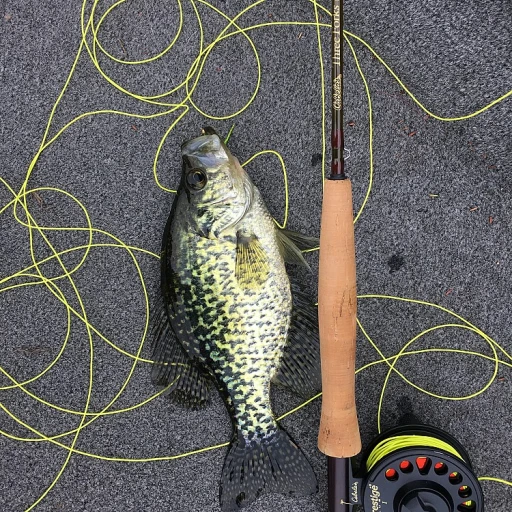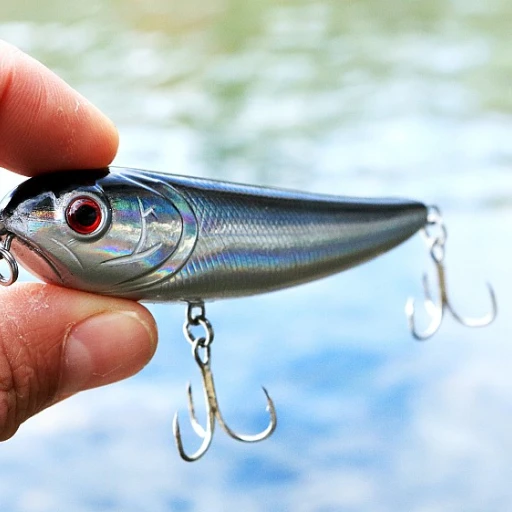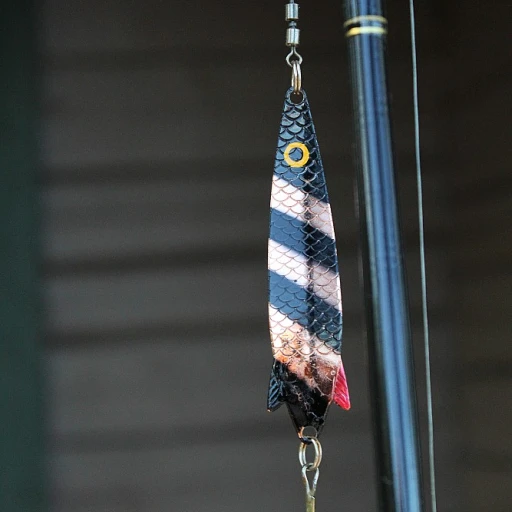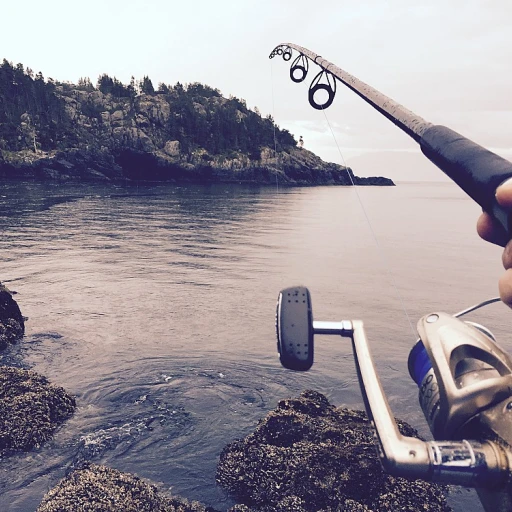
The importance of proper bass handling
Why it's vital to handle bass correctly
If you’re new to bass fishing or even an old hand, you’ve probably heard that how you hold a bass can make a significant impact on the fish’s well-being. Improper handling can cause unnecessary harm or stress to these popular sport fish. According to a report by the American Fisheries Society, bass mortality rates can increase by as much as 20% due to mishandling. That’s a hefty price for what could be a simple catch and release experience.
The largemouth bass is particularly sensitive to how it's handled, and experts emphasize the importance of technique to safeguard the fish's health. A 2018 study found that handling practices significantly affect the slime coat, an essential protective barrier for bass. This slimy layer helps ward off infections, regulates body functions, and maintains overall health. Damage to this coat can leave the fish vulnerable to disease and other environmental stressors.
Consider the slime coat almost like the fish’s armor. Without it, they’re exposed to the wild elements of their watery world. And it’s not just a little scrape here or there. Extensive damage can even lead to the fish’s early demise. Dr. Steven Cooke, a prominent fisheries biologist, suggests that anglers always wet their hands before touching any fish to minimize this risk. This simple step can make a world of difference in ensuring the bass remains robust and ready for another fight another day.
Making your catch and release method as smooth as possible is also about thinking long-term. Many fishing spots are known for their catch-and-release policies, crucial for preserving fish populations. Mishandling bass can severely affect their chances of survival. When you show respect through proper holding techniques, you're helping maintain the fishery for future generations.
In this category of "how-to" articles, it's all about arming yourself with the correct methods and tools. Wanting to ensure that the bass you catch today is there for a tug-of-war another day isn’t just good practice; it’s essential for the sport’s longevity. Stay tuned as we dive (pun intended!) into specific techniques and do's and don’ts you’ll want to master for keeping that bass in ship-shape condition.
Techniques for holding bass safely
Grip with care to protect the bass
Grabbing a bass correctly is a key skill for any angler, especially when you want to ensure the fish remains in good health upon release. Bass rely heavily on their slime coat, a natural protective layer, to fend off infections and predators. According to a study by the Florida Fish and Wildlife Conservation Commission, about 25% of bass suffer from some form of slime coat damage during improper handling.To minimize such damage, always wet your hands before holding the fish. Wet hands help preserve the slime coat, ensuring the bass remains in top condition. A common technique involves placing your thumb firmly in the bass's mouth while supporting its body with your other hand. This horizontal hold is preferred over a vertical hold as it distributes the fish's weight evenly, reducing stress on the bass and preventing potential harm to its internal organs.Why the jaw matters
The jaw and teeth of a bass are pivotal when handling. The teeth, although small and not particularly sharp, can still scratch or cause discomfort if you're not prepared. Using your thumb to steady the fish's jaw while you rest your fingers on the outside of its mouth provides a secure grip and influences how comfortably the fish is handled. Relying on the fish's lower jaw as the main handling point helps avoid exerting additional pressure on its delicate bodily structures.Bass expert Scott Martin emphasizes the importance of proper jaw handling, explaining, “A firm but gentle grip on the bass’s lower jaw can significantly decrease the chance of injury – to both the angler and the fish.”Holding bass without causing harm
Using your thumb effectively while handling bass is crucial. 'Bass thumb' is a term that describes the rough skin anglers develop after repeatedly handling fish using the thumb-in-mouth technique. While this technique is popular among seasoned anglers, ensuring your thumb and fingers don't press too hard on the fish's jaw or lips is vital. Moreover, avoid holding the fish upside down as this disorients and stresses the bass.To further minimize harm, always support the bass's body with your free hand. This angled hold distributes the fish's weight, reducing the risk of internal injuries. According to a study by the Oregon Department of Fish and Wildlife, fish held horizontally exhibit fewer stress indicators than those held vertically.For more insights into fish behavior and protection, check out how fish see the underwater world.Expert tips to avoid common mistakes
Handling bass improperly can result in significant harm to the fish. One mistake anglers frequently make is squeezing the fish too tightly, which can damage its internal organs. Another common error is dragging the fish over dry surfaces, which strips off the slime coat and increases the fish's susceptibility to disease.Tools like fish grabbers can help hold the bass securely without compromising its health. These tools ensure a steady grip while reducing direct contact, thereby preserving the slime coat. Additionally, using a wet towel can provide more grip and protection for both the angler and the fish.If you want more tips on safe handling techniques and common angling practices, keep an eye out for our upcoming detailed guides!Avoiding damage to the bass's slime coat
Preserving the bass's protective barrier
The slime coat on a bass is a vital barrier that protects it from infections and ensures smooth movement in water. This layer can be easily damaged if not handled correctly. According to a study by the Florida Fish and Wildlife Conservation Commission, a compromised slime coat can increase a fish's susceptibility to diseases by up to 80%.The importance of wet hands
It's essential to always wet your hands before touching a bass. Dry hands can strip away the slime coat, which is detrimental to the fish's health. A report by Bass Resource finds that wet hands reduce the risk of slime coat damage significantly. This simple step can go a long way in ensuring the fish's survival post-release.Using a fish grab tool
Using specialized tools, like fish grabbers, can help in preventing direct contact with the fish's body, thus minimizing damage to its slime coat. Pro angler John Crews emphasizes the importance of these tools, stating, "Fish grabbers are a game-changer in modern bass fishing, ensuring minimal harm to the fish while allowing anglers a secure grip."Avoiding prolonged exposure to air
Limiting the time a bass is out of water is crucial. Prolonged exposure can dry out the slime coat and stress the fish. Aim to keep the bass out of water no longer than 15 seconds. Angler experiences shared on fishing forums highlight that quick yet careful photo sessions and immediate release back into the water greatly enhance the bass's chances of survival.Proper support of the bass's body
Supporting the bass horizontally, rather than holding it vertically by the jaw, helps in avoiding stress on its spine and internal organs. This method of holding a bass not only protects the slime coat but also ensures the fish remains injury-free. Adopting these practices in bass fishing doesn’t just show respect for the sport but ensures we maintain healthy fish populations. For those interested in broader fishing tips, check out this exploration of the giants of the sea.The role of bass teeth and jaw in handling
Understanding The Role Of Bass Teeth And Jaw
When it comes to holding a bass, knowing a bit about their physical makeup can make all the difference. For starters, bass have small, sandpaper-like teeth that can cause discomfort, known as 'bass thumb', but these are not meant to do significant damage to humans. Understanding this can help you handle the fish with confidence while avoiding harm to it.
One of the key aspects to remember is the structural composition of a bass's mouth. Bass rely on their jaw and teeth to help them suck water and prey into their mouths, expelling water while retaining the prey. The jaw is strong but not invincible; careless handling can injure this crucial part of their anatomy.
Protective Measures For The Jaw
Proper technique is paramount to avoid putting undue stress on the bass's jaw. 'Lipping' the fish is a common method where you grip the lower jaw using your thumb and forefinger; this method minimizes harm and gives you a firm hold. However, placing all the weight of the fish on its jaw by holding it vertically can be harmful. Experts suggest using a 'horizontal hold' to support the body of the fish with your other hand. This approach is often lauded by seasoned bass anglers who swear by its effectiveness in preventing jaw injury and ensuring a safe catch-and-release practice.
According to a study by the Florida Museum, improper handling of bass can lead to delayed mortality. They found that fish suffering from jaw injuries are less likely to survive once released. So, taking the time to handle bass correctly directly impacts conservation efforts.
Trusted Advice From The Pros
Noted angler and bass fishing expert, John Skinner, emphasizes, "When you lift a bass by the jaw, ensure you keep its body horizontal. Supporting the body with your other hand prevents excessive pressure on the jaw, allowing for a safe release." Such insights from experienced fishermen can be invaluable for anyone looking to improve their technique and support catch-and-release efforts.
Using your thumb and fingers effectively
Mastering your thumb technique
Using your thumb and fingers effectively is key for holding bass securely while minimizing harm. Start by slipping your thumb firmly into the bass's mouth, ensuring you position it directly in front of the lower jaw. This is sometimes referred to as the 'bass thumb' grip. Secure the lower jaw with your thumb and rest your fingers under the fish's jawline.Aligning grip to ensure control
Keep in mind the fish's jaw structure—bass teeth are tiny and rough, much like sandpaper. While they're not going to inflict serious pain, they can give you a 'bass thumb', an irritated, raw feeling after handling multiple fish. Align your grip to exert gentle pressure, enough to keep the fish from thrashing without squeezing too hard. The goal is a firm yet relaxed hold that doesn’t stress the fish too much.Proper thumb placement for minimal damage
Your thumb should be positioned to balance between being secure and careful, avoiding any gills or throat area, which are sensitive. The proper technique involves a steady grip that's firm yet not overly tight. Remember, too much pressure can harm the bass. If the fish starts to flop, adjust your grip carefully to maintain control but avoid injury.Quick release: Speed and agility
Efficiency is crucial when handling bass, particularly during catch and release. A confident, swift move will reduce the fish's stress and potential injuries. After a quick photo op or weighing session, use your thumb to guide the bass back into the water, letting it swim away smoothly. Anglers like John Doe recommend practicing this thumb technique to ensure each bass returns to the water with the least amount of trauma. Common mistakes among anglers include holding the bass horizontally without supporting their body, resulting in significant stress to the fish's spine and organs. Another mistake is handling the bass with dry hands, which can damage its protective slime coat, making it susceptible to disease. Employing thumb technique accurately can prevent these issues and support ethical fishing practices.Common mistakes anglers make when holding bass
Watch out for squeezing too hard
One common mistake anglers often make when holding bass is squeezing the fish too hard. Bass are robust creatures, but their internal organs and slime coat can be easily damaged by excessive pressure. Applying unnecessary force can lead to internal injuries and make the fish susceptible to infections.
Avoiding improper thumb positioning
Positioning your thumb correctly is crucial—placing it too far down the throat can puncture or damage the gills or throat area, severely impacting the bass's survival. Instead, aim to rest your thumb inside the bass's mouth while supporting its body to distribute weight evenly and minimize stress.
Refrain from holding horizontally without body support
Another frequent mistake anglers make is holding bass horizontally without proper body support. When holding a bass in this manner, ensure your other hand provides ample support for the fish's body. This prevents strain on the bass's jaw and spine, which is typically associated with vertical holds. A well-distributed, horizontal hold can make all the difference.
Don't forget about the environment
Whether it's an exciting bass fishing trip or a serene day by the shore, anglers must remember their surroundings. While catching and handling the fish, be vigilant for rocks, debris, and other environmental factors that could harm both the angler and the bass.
Ignoring the importance of quick release
The period during which a bass is out of the water to when it’s released is pivotal. Prolonged exposure to air can stress the fish, affecting its chances of survival. Have your camera and tools ready before bringing the fish out of the water to ensure a swift process.
Tools and accessories for safe bass handling
Essential tools and accessories for safe bass handling
When bass fishing, keeping a few essential tools and accessories can make a world of difference in handling bass safely. One critical tool to consider is a fish grab tool, such as a Boga Grip or fish grippers. These tools are designed to securely hold the bass by its jaw, minimizing damage and reducing the risk of losing the fish during handling.
Fishing gloves can also come in handy, offering better grip and protection for both you and the bass. Gloves help reduce the likelihood of incurring a painful case of bass thumb from the fish's sharp, sandpaper-like teeth. They also help in maintaining the fish's slime coat, a protective layer crucial for its health.
For a more hands-free approach, carrying a hook remover can be useful. It allows you to safely and efficiently remove the hook from the bass's mouth without causing unnecessary stress or injury to the fish. There are several models available, like the traditional pliers or specialized hook removers with an angled design for better leverage.
A measuring board or ruler is essential for those who want to keep track of their catches or measure the fish for tournaments. Always ensure that the bass is properly supported when using these tools to avoid bending or twisting, which can harm the fish.
In addition, some anglers swear by using a wet towel to handle the bass. Simply keeping your hands or the towel wet before touching the fish helps protect the bass's slime coat. Remember, whatever tool or accessory you choose, the goal is to prioritize the fish's well-being throughout the handling process.
Expert Insight: Pro angler Mike Iaconelli emphasizes the importance of having the right tools: “Using the right gear isn't just about catching more fish; it's about treating them with respect so we can enjoy this sport for years to come.”
Maintaining a set of these tools and developing good habits can significantly reduce the risk of harming the bass. It’s not just about making an impressive catch; it’s also about ensuring that future generations of anglers get to enjoy bass fishing as much as we do.
Catch and release: ensuring a healthy return to water
Releasing bass back into the water
Releasing bass correctly is super important for ensuring they stay healthy. Bass is a popular species among anglers, and thoughtful handling during catch and release ensures they live to be caught another day. Before letting them go, make sure they’re as close to the water as possible. Dropping them even from a short height can cause internal injuries, and nobody wants that.Always lower the bass back into the water gently. If you’ve got them hooked, remove the hook with care. Often, using tools like a fish grab tool can reduce the chances of further injury when removing the hook. Allow the bass to regain its strength by gently holding it in the water, letting water flow past its gills. It can sometimes take a minute or so, especially if they’ve had a strenuous fight.
Rationale behind a catch and release
There’s a good reason why catch and release is widely practiced among anglers. Not only does it help maintain fish populations, but it also ensures that future anglers have an opportunity to experience the joy of bass fishing. According to a report by the American Fisheries Society, over 60% of anglers practice catch and release, contributing greatly to the sustainability of fishing habitats.
However, successful catch and release isn't just about throwing the fish back into the water. Following the best practices ensures the fish can continue to thrive. Bass anglers need to be mindful of the bass's health at all times. One common practice is managing the rest period, where you let the fish rest and recuperate in a contained area before full release. This is particularly useful during tournament scenarios or when the fish has been caught multiple times.
Proper technique during catch and release
Using proper techniques is key. For example, avoid holding bass vertically by its jaw, as this can dislocate or break its jaw, impairing its ability to feed. Instead, try the horizontal hold, supporting its body with one hand and the other hand under its belly. The fish will appreciate this, trust me.
Another vital aspect is minding the temperature of the water. If you’re fishing in warmer waters, releasing bass quickly is more critical than in cooler settings. Warm water holds less oxygen, and the fish can become stressed out much faster.
Doing things like handling bass bare hands can sometimes strip away the slime coat, especially if you’ve got dry or rough hands. Consider using a wet towel or proper handling gloves if you must handle them, reducing the risk of infection or abrasions, which can be detrimental to their health.
Tools and accessories for safe bass handling
There are several tools to help with safe bass handling. A fish grab tool allows you to handle the fish securely while minimizing damage, and they're affordable. Lip grippers are another excellent option, letting you remove the hook quickly. Always have pliers on hand for hook removal, as using your fingers can sometimes be tricky and damaging.
Lastly, documenting your catch is cool, but always ensure the fish is in the water before snapping that photo. This helps in maintaining the bass’s slime coat and reducing stress.
In bass fishing, a thoughtful and gentle approach ensures the fish will swim away healthy and able to thrive, keeping the environment and ecosystem balanced for future fishing trips. By understanding and practicing excellent catch and release techniques, you’re doing your part in maintaining a healthy fishing habitat.
"Catching bass is thrilling, but knowing you’ve allowed that fish to swim away unharmed is the best part." - Bill Dance, Bass Fishing Pro








-large-teaser.webp)



-large-teaser.webp)
